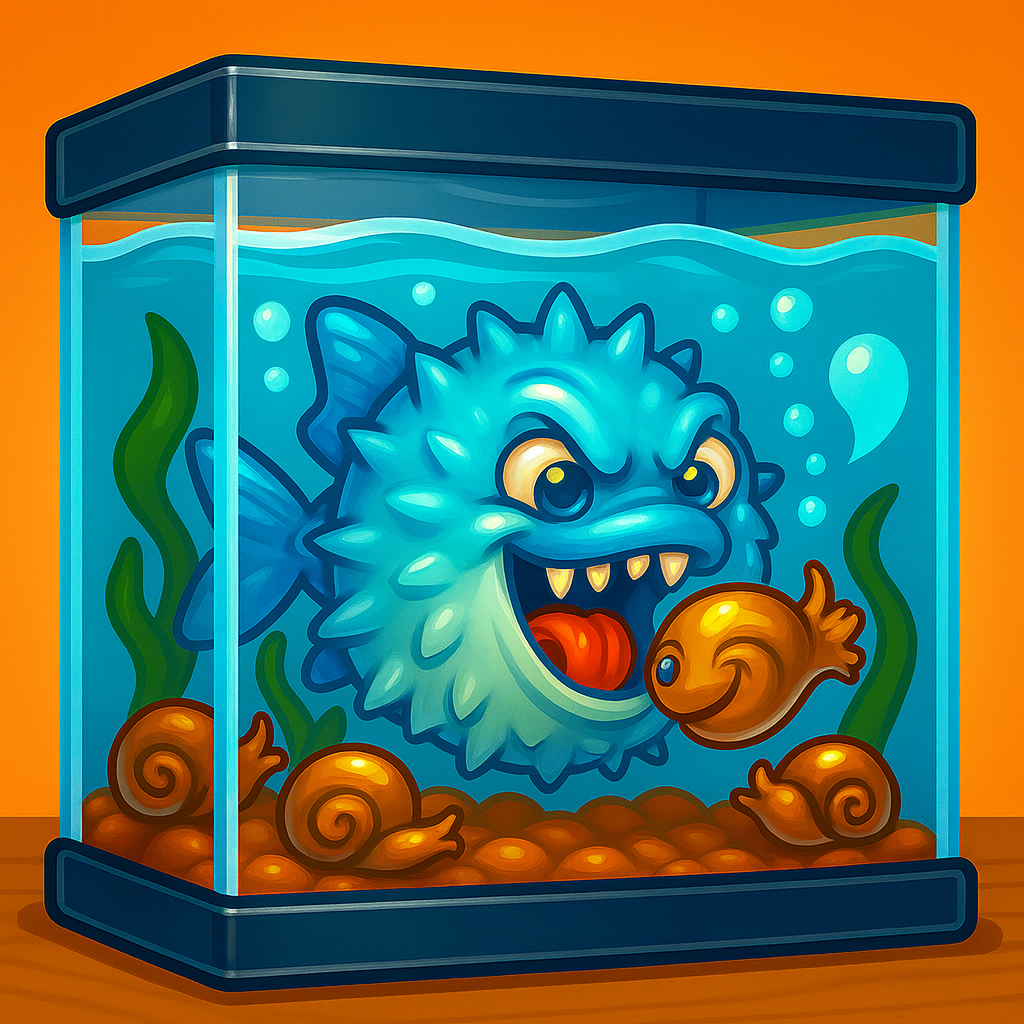Snails in Aquariums
✅ Benefits of Snails
- 🧹 Clean-up crew – Eat algae, leftover food, and decaying plants.
- 🐟 Food source – Many species (pufferfish, loaches, some cichlids) love eating snails.
- 🌱 Substrate turnover – Malaysian Trumpet Snails dig into the substrate, keeping sand from compacting.
- 🛡 Balance helper – Break down organics, helping stabilize water quality.
❌ Problems with Snails
- 🧨 Breed like crazy – Most pest snails (bladder, pond, ramshorn) reproduce very quickly. A handful can turn into hundreds within weeks if there’s excess food.
- 🕵️ Hitchhikers – Snails are so tiny they sneak into tanks hidden on live plants, nets, driftwood, décor, or even fish bags. You may not notice them until you suddenly have an outbreak.
- 🌿 Plant damage – Some species will nibble on healthy plants if underfed.
- 🦠 Potential pests – Hitchhiker snails can spread rapidly and overwhelm a tank if not controlled.
🐌 Common Types
- ✅ Nerite Snails – Great algae eaters, won’t reproduce in freshwater.
- ✅ Mystery/Apple Snails – Large, colorful, need calcium for strong shells.
- ⚠️ Malaysian Trumpet Snails – Burrow in sand; helpful, but can overpopulate fast.
- ⚠️ Ramshorn Snails – Attractive shell, but multiply rapidly.
- ❌ Bladder/Pond Snails – The most common “hitchhiker,” notorious for sudden population booms.
- ❌ Colombian Giant Ramshorn – Will destroy healthy plants; best avoided.
🛠 Controlling Snail Populations
🍽 Preventative
- Don’t overfeed fish → excess food = snail boom.
- Quarantine and rinse new plants before adding to the tank.
🧑🌾 Manual Removal
- Place vegetables (zucchini, cucumber, lettuce) in the tank at night → snails gather → remove the food in the morning with snails attached.
🐟 Natural Predators
- Puffers, loaches, and some cichlids naturally eat snails and can help control outbreaks.
🐌 Assassin Snails
- Predator snail that hunts and eats other snails.
- Slow breeders themselves → effective long-term control method.
✅ Summary
- Snails can be helpful cleaners, but pest species are notorious for breeding like crazy and sneaking in as hitchhikers on plants and equipment.
- If you suddenly see dozens, it means they’ve found too much extra food.
- The good news: they can be controlled with manual traps, predators, or assassin snails, and they also serve as natural food for puffers and loaches.

Powered by Lightspeed
Display prices in:USD